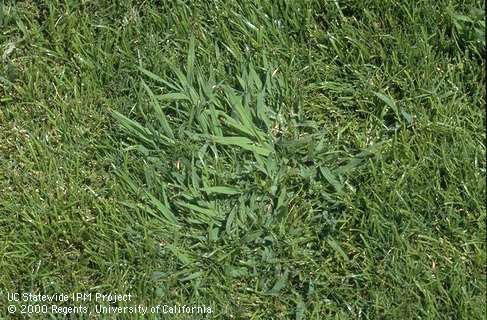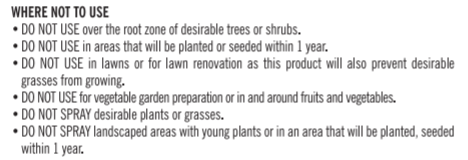
1) What is the difference between a pesticide and an herbicide?
Answer:
Here is the Environmental Protection Agencies definition for a pesticide (https://www.epa.gov/minimum-risk-pesticides/what-pesticide):
- Any substance or mixture of substances intended for preventing, destroying, repelling, or mitigating any pest.
An herbicide is a specific type of pesticide, that is meant to do the above (prevent, destroy or mitigate) an unwanted plant.
2) Are do-it-yourself herbicides a good idea? And do they work?
Answer:
This depends on the ingredients. Some comments regarding a few of the common ingredients that are used in do-it-yourself herbicides:
Sodium Chloride (table salt):
- While table salt can kill weeds, it also works quite well to kill most plants. Also, if poured on the soil, can cause the soil itself to become more saline (salty). The salt stays in the soil, and once a lot of salt accumulates, it becomes difficult for most plants (including the plants you want) to survive in the saline (salty) soil.
Acetic Acid (vinegar):
- Vinegar can kill weeds, but depending on the strength of the solution, it may be more or less effective. It is also non-selective, meaning that it can also harm the plants that you want to keep. Vinegar (acetic acid) that is formulated for application as an herbicide can be purchased at a home or garden store. Since it is being sold as an herbicide, it will have a label with specific application instructions. If using vinegar (acetic acid), using a pre-formulated product will ensure better control of the targeted weeds.
Soap:
- Soap is not the ingredient that acts as an herbicide, instead, if mixed with salt or vinegar, it will act as a surfactant. A surfactant (soap) breaks the surface tension between the herbicide (liquid) and the plant, making it easier for the herbicide to enter the plant cells.
3) If purchasing an herbicide, how do you know what to purchase?
Answer:
It is important to read the label. The label contains information about which weeds are targeted. If non-selective, it 
Author - County Director, Sutter and Yuba Counties and CE Rice and Wild Rice Advisor